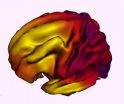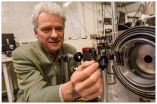(Press-News.org) A key protein previously implicated in Lou Gehrig's disease and other neurological diseases plays an important role in the response to viral infection, according to a study led by scientists from the Icahn School of Medicine at Mount Sinai published today in Nature Immunology.
Neurological diseases have long been associated with inflammation, part of the body's response to injury or infection that occurs when immune cells home in to attack invaders like bacteria and viruses, and to drive healing, but the link between them has not been understood.
This new study result suggests that genetic changes take away the ability of a protein called senataxin to moderate the inflammatory response to certain viral infections, possibly leading to persistent inflammation that could aggravate disease progression.
Using cutting-edge genomic tools, the scientists found that senataxin is deployed to quench the body's natural antiviral response at a specific point; without such control, prolonged exposure to the antiviral response can lead to inflammation. People with senataxin-related forms of ALS and ataxia have a defective SETX gene that leads to a dysfunctional form of the protein.
"We knew this protein was important, but its precise activity and role in the antiviral response had never been demonstrated before," said Harm van Bakel, co-author of the paper and Assistant Professor in the Department of Genetics and Genomic Sciences and in the Icahn Institute of Genomics and Multiscale Biology at Mount Sinai. "Teasing out the function of senataxin required an interdisciplinary approach that would not have been possible without international and cross-department collaboration and the advanced technology resources available at Mount Sinai."
Scientists used gene expression studies as well as in-depth chromatin analysis to uncover the regulatory role of the protein. While most work to characterize the protein has been conducted in yeast cells, this project gained new information by analyzing human cells and animal models. The team found that senataxin has far more power to regulate gene activity than was previously known.
"This is a protein implicated in neurodegenerative disease that has now been linked to our innate antiviral mechanism, and it offers an intriguing clue to a relation between the inflammatory response and these diseases," said Ivan Marazzi, co-author of the paper and Assistant Professor in Microbiology at Mount Sinai. "Whether viral infection plays a role in disease progression remains to be seen, but this discovery has broad implications for biomedical research and opens up new avenues that we look forward to pursuing."
INFORMATION:
Paper cited:
Matthew S. Miller, Alexander Rialdi, Jessica Sook Yuin Ho, Micah Tilove, Luis Martinez-Gil, Natasha P. Moshkina, Zuleyma Peralta, Justine Noel, Camilla Melegari, Ana Maestre, Panagiotis Mitsopoulos, Joaquín Madrenas, Sven Heinz, Chris Benner, John A. T. Young, Alicia R. Feagins, Christopher Basler, Ana Fernandez-Sesma, Olivier J. Becherel, Martin F. Lavin, Harm van Bakel, and Ivan Marazzi. "The helicase senataxin suppresses the antiviral transcriptional response and controls viral biogenesis." Nature Immunology. DOI: 10.1038/ni.3132
About the Mount Sinai Health System
The Mount Sinai Health System is an integrated health system committed to providing distinguished care, conducting transformative research, and advancing biomedical education. Structured around seven member hospital campuses and a single medical school, the Health System has an extensive ambulatory network and a range of inpatient and outpatient services--from community?based facilities to tertiary and quaternary care.
The System includes approximately 6,600 primary and specialty care physicians, 12?minority?owned free?standing ambulatory surgery centers, over 45 ambulatory practices throughout the five boroughs of New York City, Westchester, and Long Island, as well as 31 affiliated community health centers. Physicians are affiliated with the Icahn School of Medicine at Mount Sinai, which is ranked among the top 20 medical schools both in National Institutes of Health funding and by U.S. News & World Report.
For more information, visit http://www.mountsinai.org, or find Mount Sinai on Facebook, Twitter and YouTube.
The body's immune system fights disease, infections and even cancer, acting like foot soldiers to protect against invaders and dissenters. But it turns out the immune system has traitors amongst their ranks. Dr. Karin de Visser and her team at the Netherlands Cancer Institute discovered that certain immune cells are persuaded by breast tumors to facilitate the spread of cancer cells. Their findings are published advanced online on March 30 in the journal Nature.
In Western countries about one in eight women will develop breast cancer. Of the women who die of this disease, ...
Researchers at NYU Langone Medical Center have captured images of the underlying biological activity within brain cells and their tree-like extensions, or dendrites, in mice that show how their brains sort, store and make sense out of information during learning.
In a study to be published in the journal Nature online March 30, the NYU Langone neuroscientists tracked neuronal activity in dendritic nerve branches as the mice learned motor tasks such as how to run forward and backward on a small treadmill. They concluded that the generation of calcium ion spikes -- which ...
A lower percentage of children are eating fast food on any given day and calories consumed by children from burger, pizza and chicken fast food restaurants also has dropped, according to an article published online by JAMA Pediatrics.
Colin D. Rehm, Ph.D., M.P.H., formerly of the University of Washington, Seattle, now of the Friedman School of Nutrition Science and Policy at Tufts University, Boston, and Adam Drewnowski, Ph.D., of the University of Washington, Seattle, analyzed data from the National Health and Nutrition Examination Survey from 2003 to 2010 to examine ...
The medication glyburide, which has been increasingly used to treat gestational diabetes in pregnant women, was associated with higher risk for newborns to be admitted to a neonatal intensive care unit, have respiratory distress, hypoglycemia (low blood glucose), birth injury and be large for gestational age compared with infants born to women treated with insulin, according to an article published online by JAMA Pediatrics.
The prevalence of gestational diabetes mellitus (GDM) in the United States has more than doubled during the last 20 years. Given the widespread and ...
Turns out, an apple a day won't keep the doctor away but it may mean you will use fewer prescription medications, according to an article published online by JAMA Internal Medicine.
The apple has come to symbolize health and healthy habits. But can apple consumption be associated with reduced health care use because patients who eat them might visit doctors less?
Matthew A. Davis, D.C., M.P.H., Ph.D., of the University of Michigan School of Nursing, Ann Arbor, and coauthors analyzed data from the National Health and Nutrition Examination Survey (2007-2008 and 2009-2010) ...
Scientists have developed tiny 'nanoneedles' that have successfully prompted parts of the body to generate new blood vessels, in a trial in mice.
The researchers, from Imperial College London and Houston Methodist Research Institute in the USA, hope their nanoneedle technique could ultimately help damaged organs and nerves to repair themselves and help transplanted organs to thrive.
The nanoneedles work by delivering nucleic acids to a specific area. Nucleic acids are the building blocks of all living organisms and they encode, transmit and express genetic information. ...
Characterizing associations between socioeconomic factors and children's brain development, a team including investigators from nine universities across the country reports correlative links between family income and brain structure. Relationships between the brain and family income were strongest in the lowest end of the economic range - suggesting that interventional policies aimed at these children may have the largest societal impact. The study, led by researchers at The Saban Research Institute of Children's Hospital Los Angeles and Columbia University Medical Center, ...
A new study has confirmed the existence of a positive feedback operating in climate change whereby warming itself may amplify a rise in greenhouse gases resulting in additional warming.
The study, published in the journal Nature Climate Change, shows that in addition to the well understood effect of greenhouse gases on the Earth's temperature, researchers can now confirm directly from ice-core data that the global temperature has a profound effect on atmospheric greenhouse gas concentrations. This means that as the Earth's temperature rises, the positive feedback in the ...
Hamilton, ON (March 30, 2015) - Researchers from McMaster University and the Icahn School of Medicine at Mount Sinai, New York have discovered that a protein associated with neurodegenerative diseases like ALS also plays an important role in the body's natural antiviral response.
The study, published today in Nature Immunology, offers new insight into the link between neurodegenerative disorders and inflammation, and provides a framework to explore more fully the possibility that viral infection may lead to onset of these diseases.
Matthew Miller, an investigator at ...
There are electrical signals in the nervous system, the brain and throughout the human body and there are tiny magnetic fields associated with these signals that could be important for medical science. Researchers from the Niels Bohr Institute have just developed a method that could be used to obtain extremely precise measurements of ultra-small magnetic fields. The results are published in the scientific journal Nature Physics.
The tiny magnetic fields are all the way down on the atomic level. The atoms do not stand still, they revolve around themselves and the axis is ...



